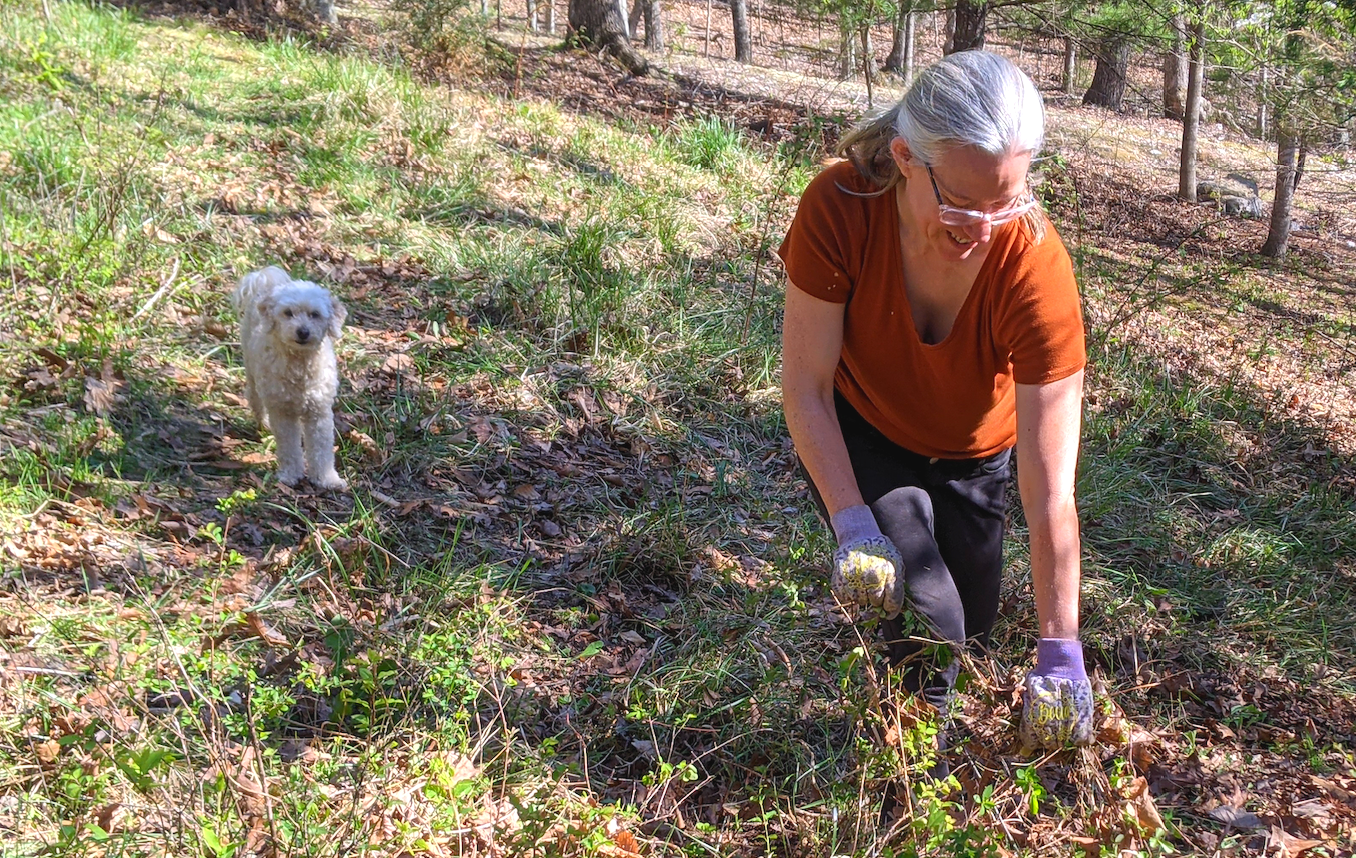4.15.25 | Weed Talk
Becca and Becca’s supervisor
I love weeding!
It gets me outdoors, it can be pretty physical, and there is a clearly defined goal. I find getting rid of vines to be particularly satisfying. I get ahold of one end and yank and discover how far it has spread. It feels so good to rid the dirt of it. Once I really get into it, I find that my eyes and brain start to adjust, like when doing a jigsaw puzzle. My focus narrows to the specific shapes and shades of color of the weeds. I'm currently working on a hillside on our property that has become overrun with Japanese Honeysuckle. Luckily, with its fairly shallow rooting, and the recent rains, it's coming up beautifully.
But what defines a weed as a weed? Species identified as invasives are clearly defined weeds, but there are many others where the definition certainly lies in the eye of the beholder. Ultimately we don't want monoculture, we want diversity (in so many ways!). So I find myself choosing some invasives to hold onto and cultivate. At the top of that list are wineberries. I don't want to throw out a free food source, especially now. I've been experimenting with trying to control small patches of it on our property. Does this make me a bad person?
And then of course there are other plants that folks consider weeds, that I most definitely do not. There are weeds flourishing now that are edible and nutritious, giving us a bounty before the cultivated garden even gets started!
I've been making wild green smoothies lately. (Yes, as mentioned before, I am a hippie.) These mostly consist of frozen mixed berries, a banana (the secret ingredient to any smoothie—thank you Sarah Littlefair) and whatever mixture of greens I pick. Right now the mixture mostly consists of red clover, dandelion greens, English plantain, violet flowers and violet greens.
This is definitely a case of food as medicine. The smoothie tastes fine, but flavor is not the motivation here; it's for the nutrition. When I consume this on a regular basis, I sleep better and my brain works better. It's obvious: Research shows that nutrients fade from fruits and vegetables during storage and transport, which is part of the argument for the local food movement.
And you can't get much more local than your own backyard.
—Becca
A few notes of caution: If you are interested in making your own wild green smoothies, you may want to start with a single species and make sure that your digestive system tolerates it. Also, be sure that you are confident in your plant identification. There are noxious plants thriving right now that you don't want to consume. The most dominant in my yard is the buttercup. And please don't consume greens from areas that are sprayed with herbicides.
FROM THE APRIL 15, 2025 NEWSLETTER | CLICK HERE TO SUBSCRIBE

